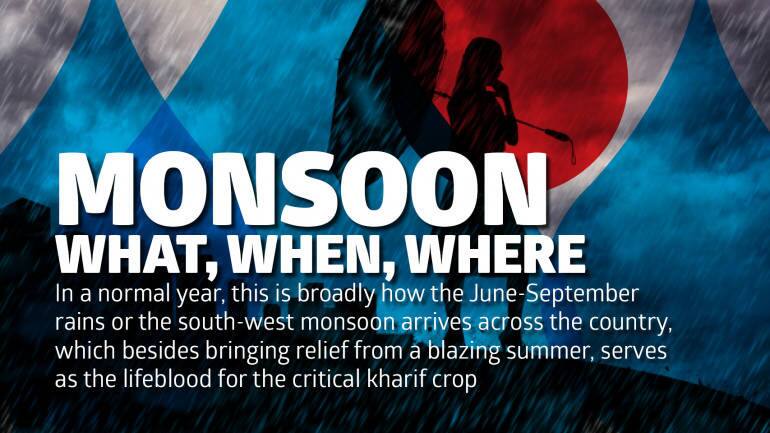


The June-September monsoon is likely to be 96 percent of the long-period average, the Met department said on Tuesday, a forecast that will be cheered by millions of farmers and the government alike.
According to the Met’s classification, the monsoon is considered normal is rains are between 96-104 percent of the 50-year average rainfall of 89 cms. The monsoon is taken to be below normal if rains are between 90 – 96 percent. If less than 90, it is considered deficient.
“India is in for a normal monsoon which will be good for agriculture and economy,” KJ Ramesh, the director general of IMD, told reporters in the long-range forecast for 2017.
Skymet, a private forecasting agency has predicted monsoon’s arrival in Kerala between May 28 and May 30.

This year's forecast of 96 percent comes amid a continuing drought in the southern states of Tamil Nadu and Karnataka. Last year, the rains, while abundant in some areas, were 3 percent below normal on an overall basis and came on the heels of two straight years of a crippling drought.
Private weather forecaster Skymet, meanwhile, has predicted slightly less than the average rains for 2017, due to high chances of El Nino, a weather phenomenon characterised by an abnormal warming of the eastern Pacific Ocean that triggers weaker rains and droughts in the Indian sub-continent.
This year, the monsoon is critical because, apart from ending a drought in the southern states, a good farm output will help keep prices under check. Food price pressures could build anew if El Nino disrupts the south-west monsoon this year.
Earlier this month, the Reserve Bank of India (RBI) has warned that the uncertainty surrounding the outcome of the south-west monsoon in view of the rising probability of an El Nino event could have implications over food inflation.
A truant monsoon often ruins rural incomes, prompting demands for compensation and farm loan waivers. The new UP government had announced writing off of loans worth Rs 36,359 crore.
Poor rains can shrivel the rural economy, cut food output and stoke prices. When rains are plentiful, they usually raise farm income and rural demand for consumer goods, which boosts the economy.
Despite industrial growth, two-thirds of Indians depend on a farm-based income. Nearly 60 percent of the country’s farms lack irrigation facilities, leaving millions of farmers dependent on the rains.
The monsoon is critical to replenish 81 reservoirs necessary for power generation, irrigation and drinking.
The four-month rainy spell normally begins in Kerala on June 1. The rain-bearing system then typically covers the whole of the country in a month.
In 2015, the monsoon was deficient by 14 percent, leading to a crippling drought in 302 of India’s 640 districts. In the previous year, the rains were short by 12 percent.
For good farm output, the rains need to be not just plentiful overall, but evenly spread. Inadequate rains can trigger rural distress, which can forces government to increase spending to offset losses.
In 2009, when India witnessed its worst drought in three decades, farm output crawled 0.2 percent, battered by 22 percent deficient monsoon rains.
Discover the latest Business News, Sensex, and Nifty updates. Obtain Personal Finance insights, tax queries, and expert opinions on Moneycontrol or download the Moneycontrol App to stay updated!